- Sign In or Register
- Boats for Sale
- Research Boats
- Sell a Boat
- Search Alerts
- My Listings
- Account Settings
- Dealer Advertising

Pdq Boats for sale
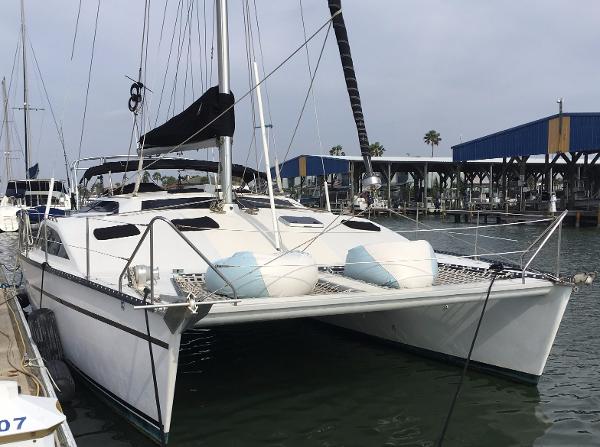
1990 PDQ 36
Port Aransas, Texas
Category Catamarans
Posted Over 1 Month
1990 PDQ 36 Performance, Durability, Quality, describes the PDQ 36' catamaran. Constructed for durability and safe passages as a capable blue water cruiser. This is a fast nimble sailing cat with all lines run aft. Easily single handed. Even the reef lines are run aft with a jiffy reefing system. If you are looking for an affordable Catamaran for cruising or live aboard, this is the boat for you. Well equipped, maintained, and updated. Newly re-powered with two 20hp Yamaha out boards (hidden), makes for easy maintenance and reliability. Experience the full queen size beds in two airy state rooms, sizable galley, and room for six at the table.

1998 PDQ 36
Dingmans Ferry, Pennsylvania
1998 PDQ 36 FOR QUESTIONS CONTACT: CHRIS 508-863-9797 or [email protected] 1998 PDQ YACHTS 36 LRC DETAILS: Length: 36ft-5inMaximum Draft:2ft-9inBeam: 18ft-3inMast Height Clearance: 50ftCabins: 2Heads: 1 LAYOUT AND ACCOMMODATIONS-Saloon settee seats 6 comfortably-Dining table with fold-out leaves. Two drawer storage below and under sole is additional storage for paper goods, etc. ADS 4 speaker system driven by Alpine V4 amplifier. Sony FM/AM/CD player-Guest fans (4) -Samsung 26in flat screen TV-Two private staterooms with queen size berths-Numerous windowed hatches and portlites provide lots of light and air-Port side features a walk-in pantry with standing headroom and custom built-in storage shelving. HEAD-Separate full height shower-Natures Head Composting, Odorless toilet-No smelly holding tank to pump out or dump 3 miles offshore GALLEY-Adler/Barbour 5 cu ft fridge-Force 10 two burner range and oven-Sharp Microwave-Salt water pre-wash foot pump-Potable water filter) DECK AND EQUIPMENT-Port: 30 lb Bruce -Starboard: 45 lb steel Spade anchor -50 ft galvanized chain -100 ft 5/16 G4 galvanized chain -200 ft 3 strand nylon -150 ft 3 Strand nylon -Bridle: Wichard snap hooks on 25 ft. lengths of 1/2in braid with SeaDog stainless chain grabber-Lofrans Royal manual windlass-Avon RIB inflatable dinghy with 2 HP Honda 4-stroke motor in davits ELECTRONICS AND NAVIGATION-Raymarine: C80 Radar/Plotter-Nav 398 GPS/Loran-ST60 Wind Machine -ST 4000 Auto Pilot-Tridata Sounder-Icom IC-M302 VHF ELECTRICAL, POWER, PLUMBING-8 Trojan Deep Cycle Batteries Total 1040 Amp Hrs-1 Magnum Force engine start-Solar Panels: 200 watts atop hard bimini-Solar Stik: 2-50 watt articulating panels on swiveling Stik-Wind Generators: 2 Air Breeze-Blue Sky Solar Boost MPPT charge controller-Blue Sky IPN-Pro Remote controller and battery system monitor-Freedom 20 Inverter/Charger-Quicksilver Galvanic Isolator-Nicro Solar/Battery powered vents ENGINE AND MECHANICAL: -Engines: Twin (in-board) diesel Yanmar 2GM20 FC. -Port: 3245 hrs Stbd: 3554-Yanmar sail drives-Folding 2 blade props SAILS AND RIGGING-Main 275 sq ft-135% Genoa 195 sq ft-Spinnaker 325 sq ft-Harken Winches #42 (2) #16-Harken Mk II Jib Reefing and Furling MISC-Salt water deck washdown-Whale Swim N Rinse shower on stern steps-Large number of well-organized spare parts and maintenance items included -Owner has manuals for most onboard systems-Maintenance log is available BOAT LOCATION: Fort Lauderdale, FL (33308)
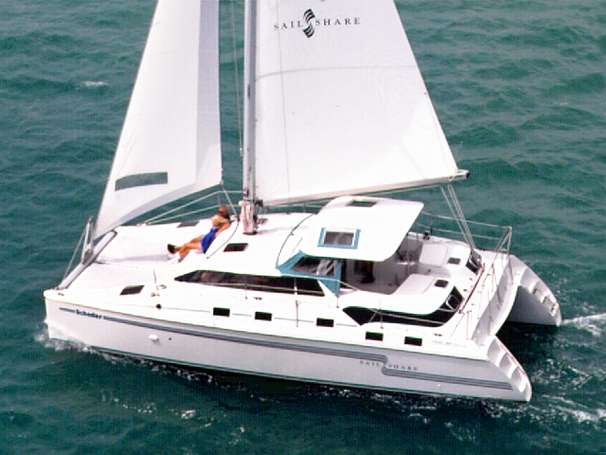
1996 PDQ 32
New Bern, North Carolina
1996 PDQ 32 PDQs are high quality Canadian built cruising Cats. Typical speeds are 10 to 12 knots but they have been known to reach 16 with a good spinnaker. The PDQ 32 is a very bright and airy-feeling boat and has one of the best cockpits ever designed. A practical layout, ingenious convertible hardtop with a protected helm station and an efficient sail plan, make this catamaran an ideal live aboard cruiser.If you are looking for a great cruising cat that is well built and a good value here she is.Wave'n Bye Bye has 2 new Yamaha 9.9 outboards (less than 10 hours use).
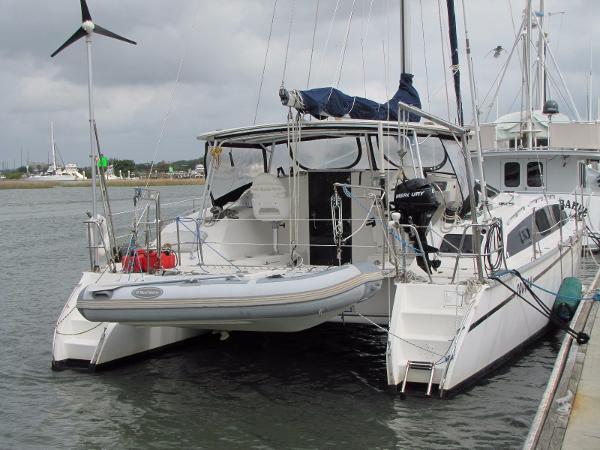
1992 PDQ Capella Sail Catamaran
Sarasota, Florida
Model Capella Sail Catamaran
1992 PDQ Capella Sail Catamaran The PDQ Capella has long enjoyed a reputation of quality construction, comfortable accommodations and spirited performance. Her shoal draft and easy to handle sail plan make it a go anywhere, FUN, boat. If you plans are to coastal cruise, club race or an extended trip into the Caribbean Sea this could be the boat.She has the sought after three cabin one head layout. The galley is down offering large prep areas and safety for the cook."Toucan" has just returned to the States after an extended Bahamas stay and is ready to return to the islands. Some of her option features are: Hard Top with Full Enclosure, Solar Panel, Wind Generator, Dual Anchor Systems, New Standing Rigging,
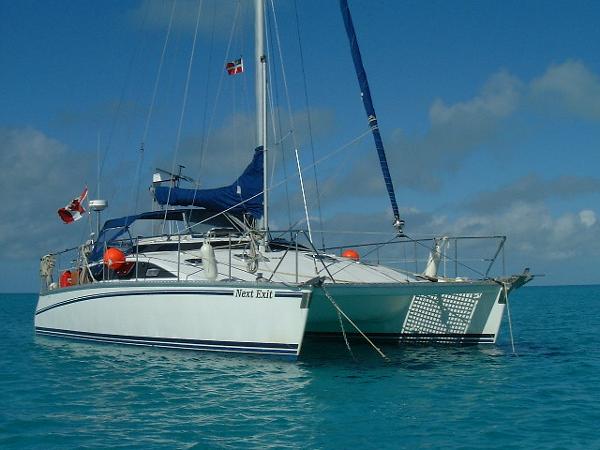
1993 PDQ Capella
Clearwater, Florida
Model Capella
Category Sailboats
1993 PDQ Capella The PDQ 36 is an affordable, safe and proven performance cruising catamaran. Her 2'10" draft is ideal for tucking into protected harbor ages while her 18'3" beam w/comfortable bridge deck add amazing comfort and stability. When not under sail she is powered by twin fuel efficient Yamaha 9.9 hi-thrust four stroke outboards (Dec 2009). Her cruising package includes Water Maker, Solar, Wind Generator, Dual Chartplotters, Radar, VHF with AIS, rebuilt Auto Pilot and higher stainless stations (30 inch instead of stock 24) w/jack lines on both hulls for extra safety.
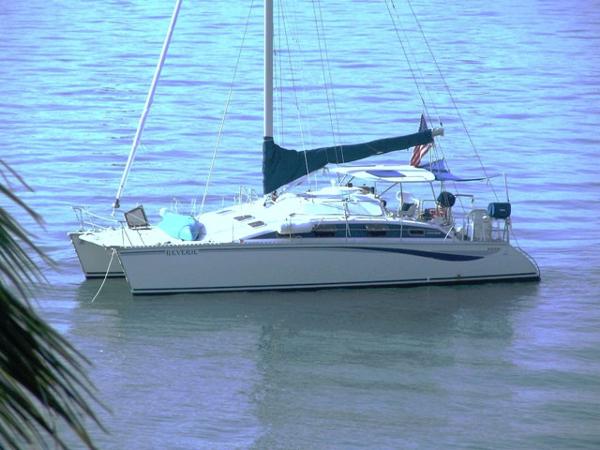
1997 PDQ 36 Capella LRC
Model 36 Capella LRC
1997 PDQ 36 Capella LRC PDQ 36 Sail LRC CatamaranHuge Price Reduction 11/23/15"Reverie" is a well, equipped and maintained vessel.Her amenities, cruising equipment and ease of fast sailing make her a great boat for coastal or Caribbean cruising.Options Include:Fiberglass Factory Hard Top with Full Enclosure,Dinghy Davit System, Electric Windlass andMagna Grill, 80 GPD Water Maker.She has a great two Cabin, two Head layout,Auto Pilot, Air Conditioning, RADAR, Chart Plotter andRefrigerator with separate Freezer.More Pictures to Follow Soon.
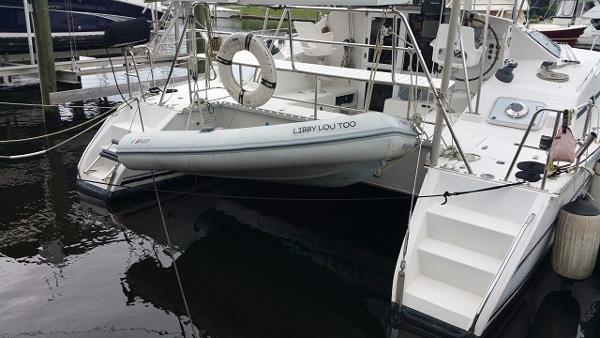
2001 PDQ Capella LRC
Model Capella LRC
2001 PDQ Capella LRC The PDQ 36 has long enjoyed a reputation of a Catamaranthat does most things very well.They sail wonderfully with ease and a good turn of speed. The accommodations are quite adequate andthe fit and finish is very good.I have seen many of these boats all over the Caribbean."Libby Lou" has recently returned from a multi-year tripin the Caribbean and is ready to return.She has been well cared for by loving owners and shows well.Equipped with Water Maker, Wind Generator, Solar Panels, Portable Generator, Stack Pack Main Sail, Roller Furling, Asymmetrical Spinnaker, Self-tailing Winches andan Electric Anchor Windlass. Don't miss this great boat!!

2000 PDQ 32
Marina Del Rey, California
2000 PDQ 32 REDUCED SEPTEMBER The PDQ 32 is a long range cruising catamaran. with a light and open interior it is well suited for live aboard as well. Sail controls lead aft to the cockpit and the boat is suited to short handed sailing.
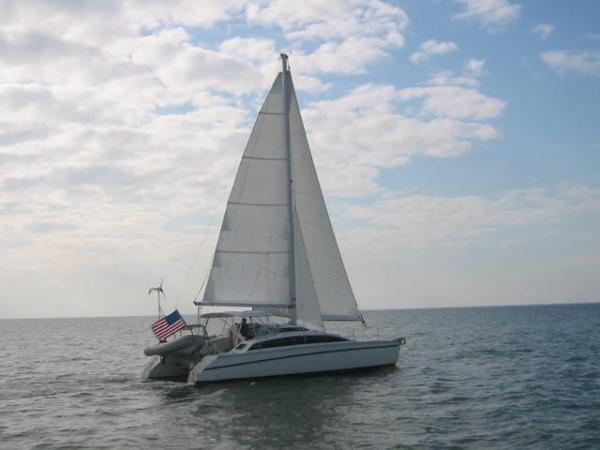
1991 PDQ 36 Capella
Marco Island, Florida
Model 36 Capella
1991 PDQ 36 Capella This PDQ Capella Classic is an outstanding cruising catamaran with just the right mix of speed comfort, room, and at a very attractive price. It features twin retractable Yamaha 9.9hp outboards, a large sail plan, cockpit hardtop, solar panels, wind generator, full galley, twin double cabins, large salon, and spacious head. This vessel has been stored on a lift and well maintained by a knowledgeable owner. It is ideal for coastal cruising, or exploring the Bahamas and Caribbean.
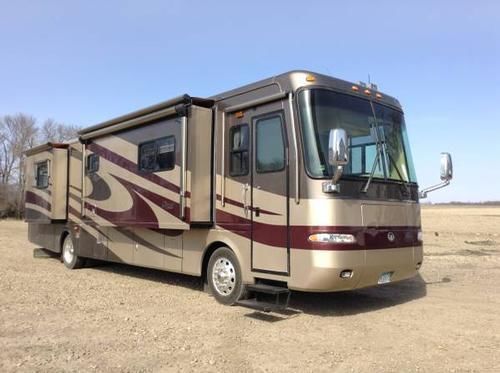
2005 Monaco Diplomat 40PDQ
Sherburn, Minnesota
Beautiful Inside And Out - In Excellent Condition!!! Smoke & Pet Free. INTERIOR FEATURES: Ceramic Floors, Carpet, Oak Cabinet, Corian Counter Tops, Full Kitchen, 4 Door Fridge, Separate Ice Maker, Conv. Microwave, Stove Top, Dining Table & 4 Chairs, Split Bath, Shower w/ Glass Door, Skylight, TV, DVD, CD/Cassette, Sound System, Monitor Panel, Day/Night Shades, Fantastic Fan, Sleeps 5: Queen Island Bed, Sofa Sleeper. - See more at: http://www.rvregistry.com/used-rv/1009645.htm#sthash.FmcAQiF7.dpuf

1998 Pdq Capella LRC 36
Jacksonville, Florida
1998 Pdq Capella LRC 36 Please contact the owner directly @ 256-270-5557 or ...Length 36 36,Mast height. 47 1/2' Beam. 18' 3" Draft. 3' fully loaded Fuel. 55 gallons Water. 80 gallons Holding tank. 35 gallons. Hull number 69. Professionally and consistently maintained, solidly built PDQ catamaran is very well equipped for extended live-aboard and open ocean cruising. Beautiful interior, teak cabin sole, nine ports, eight polished aluminum hatches, wine table and storage under dinette table, aft pantry cabin, under sole dry storage. She is the LRC (long range cruiser) version with twin Yanmar diesel engines (GMF20)built for open ocean as well as comfortable coastal cruising. Fully self sufficient with solar and wind power. With a very impressive inventory of cruising features -- both for safety and comfort -- she is ready for further sailing adventures. UPDATE, AUGUST 5. LAUNCHED BACK IN WATER WITH NEW BOTTOM PAINT, ZINCS, THRU-HULL INSPECTIONS, SAILDRIVE OIL CHANGED, ETC. HULLS HAVE BEEN CLEANED AND WAXED. SHE LOOKS BEAUTIFUL!GO TO BOATSFSBO.COM AND TYPE IN ID# 97812 FOR FULL DESCRIPTION. Make: Pdq Model: Capella LRC 36 Length: 36 Dealer: BoatsFSBO.com ID: 215483 Ad provided by BoatingBay

2003 PDQ MV-34 Passagemaker
Grasonville, Maryland
2003 PDQ MV-34 Passagemaker SHE'S A BEAUTIFUL "PDQ" CATAMARAN SHE IS THE VERY POPULAR "MV-35 PASSAGEMAKER CATAMARAN" BUILT BY PDQ THIS BOAT IS POWERED BY TWIN YANMAR FRESH WATER COOLED DIESELS WITH 75 H.P. EACH WITH ONLY 900 TOTAL HOURS. THIS BOAT IS NICELY EQUIPPED WITH AIR CONDITIONING, REVERSE CYCLE HEAT, GENERATOR, WATER MAKER, COMPLETELY EQUIPPED GALLEY, ELECTRONICS, SEARCH LIGHT, SATELLITE SYSTEM, LOWER STATION, INVERTER, WINDLASS, DINGHY DAVITS, CHERRYWOOD CABINETRY, TELEVISION, CATAMARAN STYLING, CATAMARAN EFFICIENCY AND SO MUCH MORE. "More fun and less fuel" is what this boat is all about. The PDQ provides room, comfort and security with the lack of rocking, rolling and frequent stops at the fuel pump. The dinette table welcomes six adults with her panoramic view. The head and shower provides a lot of room along with the two staterooms that give you room to stretch out on real queen size mattresses. With the thin hulls, the boat cuts through the chop without the pounding of a conventional hull. Quality, durability, economy and fun are automatically built into this boat. CLICK ONTO FULL SPECS FOR PICTURES AND INFORMATION
36' 1998 PDQ Capella LRC
Jacksonville, Georgia
Please contact the owner directly @ 256-270-5557 or [email removed] height. 47 1/2' Beam. 18' 3" Draft. 3' fully loaded Fuel. 55 gallons Water. 80 gallons Holding tank. 35 gallons. Hull number 69. Professionally and consistently maintained, solidly built PDQ catamaran is very well equipped for extended live-aboard and open ocean cruising. Beautiful interior, teak cabin sole, nine ports, eight polished aluminum hatches, wine table and storage under dinette table, aft pantry cabin, under sole dry storage. She is the LRC (long range cruiser) version with twin Yanmar diesel engines (GMF20)built for open ocean as well as comfortable coastal cruising. Fully self sufficient with solar and wind power. With a very impressive inventory of cruising features -- both for safety and comfort -- she is ready for further sailing adventures. Maintenance haulout scheduled for July 25 at Sadler Point Marine in Jacksonville with new bottom paint, zincs, etc. Mooring located at Jacksonville NAS Marina. Can only be viewed by appointment. Call show contact info or show contact info Comfort: Mermaid 12000 BTU air-conditioner (reverse cycle heat) Wallas Nautic 40D diesel heater Seaward S600 electric/heat exchanger water heater 7 low amp use fans. Galley: Water maker PUR PowerSurvivor 80E Force 10 LPG 2 burner stove with oven/broiler Microwave oven Freezer/refrigerator with Digital Controller Frigoboat K35F Freezer (2013) 1 -- 8 lb aluminum LPG tank 1 -- 11 lb Lite cylinder composite LPG tank 1 -- 10 lb Stl LPG tank. Head: Jabasco electric toilet system (2014) 12v macerator pump/y valve discharge). Electronics, Communications & Navigation Equipment: SSB radio ICOM IC-M802 SCS Pactor Modem Xantrex Link 2000 battery monitor Xantrex inverter/charger Freedom Marine 20 Xantrex Trucharge 40 multistage battery charger Aquair 100 Wind Generator with Hydro conversion kit Raymarine ST60 wind (2012) Raymarine ST50 tridata Raymarine ST4000 wheel autopilot (motor assembly new 2013) Cap Horn wind vane Furuno 1715 radar 2 Kyocara KD-135SX solar panels 4 Siemens Marine Power 50 solar panels Blue Sky Solar Boost 30241 MPPT charge controller 2 Balmar MC-612 Max Charge alternator regulators 6 HD batteries (2011) 1 Odyssey PC1500 AGM starting battery Honda 2000 generator Standard Horizon GX2335S VHF ICOM IC-M1 Handheld VHF Lewmar V1 windlass with manual override Lopolight Tricolor with anchor -- 2 nm LED KVH TracPhone FB150 Immarsat Marinco 30A 50' power line Garmin GPSmap 5012 Garmin GPSmap 182C Transformer -- converts 240v/120v AC Pioneer DEH-P6900UB CD receiver Insignia TV Antenna on Mast (2013) LED light fixtures throughout. Deck Equipment & Hull: Magma Newport grill BBQ (2011) Cobra 16 kg anchor with 100' 5/16" G4 chain and 200' 9/16" line Danforth 22 lb galvanized anchor with 60' 1/4″ G4 chain and 200' 1/2″ line 15 lb Fortress anchor Lewmar V1 Windlass with manual override Fully enclosed dodgers/bimini Cockpit cushions 1 Vetus commodore helm seat with adjustable pedestal 1 Springfield Yachtsman chair with fixed pedestal Blue Performance cockpit, searail and winch handles bags Hard top bimini. Engine & Mechanical: 2 Yanmar GMF20 w/SD20 sail drive Algea-X fuel cleaner 2 Racor fuel filters/water separators Starboard engine rebuild 01/2011 2 two-blade folding propellers 2 three-blade fixed propellers. Sails & Rigging: Storm-Bag storm jib Harken MK11 unit 1.2 jib furler Standard symmetrical spinnaker 2 reefs full batten main sail 150% jib Walder 203C boom brake Main sheet traveller runs on the top of the hard-top Heavy Duty S/S dinghy davits with triple pulley blocks 2006 Yahmaha 15HP 2 stroke outboard (dinghy not included, but we are searching for a used one). Safety Equipment & Other: ARC GlobalFix 406 EPIRB (Recertified 2013) Zodiac Class Ocean ISAF life raft (Repacked 2013) Electro System gas detector w/solenoid valve Tri-Lens Radar reflector Davis Echomaster radar reflector Fiorentino Para Anchor w/anchor rode Paratech Delta Drogue West Marine (JonBuoy) Life Saver MOB module Lifesling Overboard Rescue System Emergency tiller system Fire extinguishers. Additional: Dock Lines, fenders 6 Manual bilge pump (Whale) Wash down pump Aft shower/pump.

PDQ 36 Sailing Catamaran with Diesel Engines
Bath, North Carolina
Tandem 1997 PDQ 36' Sailing Catamaran with Twin Diesel Engines Location: Bath, NC Price: $155,000 I'm Tandem's 2nd owner and have cruised over 7,500 miles in the last 7 years. She is very well equipped and is in excellent sail-away condition. I'm sure you've researched the PDQ catamarans and appreciate their quality and sensible design both in sailing performance and accommodations. When you compare Tandem to other PDQs on the market, please be aware that Tandem is a Long Range Cruiser model with 2 diesel motors instead of 2 outboards. The diesels provide outstanding reliability, improved performance, large alternators for battery charging and hot water heating. Tandem was hauled in 2014 and has fresh bottom paint. All necessary maintenance was performed and she was surveyed with outstanding results. Please contact me for more information, with any questions or to arrange a visit and test sail. www.pdq36.com has lots of information about PDQs, PDQ links and PDQs for sale, including Tandem. Note that Tandem is also being sold privately and this listing may be removed at any time.

1998 Ocean Alexander 546 Yachtfisher
Fort Lauderdale, Florida
Make Ocean Alexander
Model 546 Yachtfisher
1998 Ocean Alexander 546 Yachtfisher PDQ is a three stateroom cockpit motoryacht that is powered by twin Caterpillar diesels. The layout offers generously proportioned aft deck, master and VIP suites, salon, plus an enclosed command bridge. The boat is perfect for cruising thanks in part to an abundant amount of storage, home sized appliances, a huge walk-in lazarette, and roomy stand up engine room. The convenient cockpit with nonskid swim platform is another compliment to this Ed Monk design. This Ocean Alexander has benefited from caring owners and a professional maintenance program. PDQ spent the first ten years of her life in Wisconsin. During that time, she averaged less than 80 hours use per year and was always stored away each winter. The current owner purchased the yacht in the summer of 2009 and since, he has had the opportunity to enjoy years of dependable cruising. In June 2016, PDQ was hauled out of the water and received new anti-foul paint, running gear and bearings were inspected, Naiad Stabilizers were dropped and serviced, propellers and rudders were removed and serviced, the exterior was polished and the interior and engine room have been detailed. The seller is moving down to an express fisherman or center counsel and will consider quality trades.
Narrow Results
Current search reset all.
- Keyword: pdq
- Ocean Alexander (1)
- Sailboats (5)
- Catamarans (2)
- Florida (7)
- North Carolina (2)
- California (1)
- Georgia (1)
- Maryland (1)
- Minnesota (1)
- Pennsylvania (1)
- Search Title Only
- Has Picture
- Include Sold Listings
Showcase Ads

1974 Boston Whaler Revenge
Mechanicsville, VA

2012 Axis A22
Daly City, CA

2014 Tige Z1

2002 Centurion Typhoon
Albuquerque, NM

2014 Boston Whaler 280 Outrage
Houston, TX

2013 Stingray 191LX
Gulfport, MS

2017 Bulls Bay 200 CC
Kenneth City, FL
Create Alert
Please, name this search
Select Interval
Alert Successfully Created
- New Sailboats
- Sailboats 21-30ft
- Sailboats 31-35ft
- Sailboats 36-40ft
- Sailboats Over 40ft
- Sailboats Under 21feet
- used_sailboats
- Apps and Computer Programs
- Communications
- Fishfinders
- Handheld Electronics
- Plotters MFDS Rradar
- Wind, Speed & Depth Instruments
- Anchoring Mooring
- Running Rigging
- Sails Canvas
- Standing Rigging
- Diesel Engines
- Off Grid Energy
- Cleaning Waxing
- DIY Projects
- Repair, Tools & Materials
- Spare Parts
- Tools & Gadgets
- Cabin Comfort
- Ventilation
- Footwear Apparel
- Foul Weather Gear
- Mailport & PS Advisor
- Inside Practical Sailor Blog
- Activate My Web Access
- Reset Password
- Customer Service

- Free Newsletter

Hunter 35.5 Legend Used Boat Review

Pearson Rhodes 41/Rhodes Bounty II Used Sailboat Review
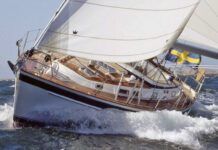
Hallberg-Rassy 42 Used Sailboat Review

How to Perform Your Own Pre-Buy Inspection

Thinking Through a Solar Power Installation

How Does the Gulf Stream Influence our Weather?

Can You Run a Marine Air-Conditioner on Battery Power?

Preparing Yourself for Solo Sailing

Practical Sailor Classic: The Load on Your Rode

Anchor Rodes for Smaller Sailboats

Ground Tackle Inspection Tips

Shoe Goo II Excels for Quick Sail Repairs

Diesel Performance Additives

What Oil Analysis Reveals About Your Engine

Painting a New Bootstripe Like a Pro

Penetrating Epoxy—Another Marketing Gimmick?
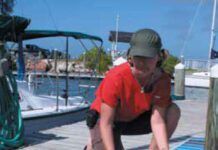
The Best Tools for Bottom Painting

The Hidden Maintenance Problems That Can Ruin Your Day: Part 1

Alcohol Stoves— Swan Song or Rebirth?

Living Aboard with an Alcohol Stove

Choosing the Right Fuel for Your Alcohol Stove

How to Select Crew for a Passage or Delivery

Preparing A Boat to Sail Solo

Re-sealing the Seams on Waterproof Fabrics


Waxing and Polishing Your Boat

Reducing Engine Room Noise

Tricks and Tips to Forming Do-it-yourself Rigging Terminals

Marine Toilet Maintenance Tips

Learning to Live with Plastic Boat Bits
- Sailboat Reviews
The PDQ 32: A Comfortable Cruising Cat
Fast and full of unique features, the pdq 32 continues to impress..

PDQ Yachts in Whitby, Ontario, Canada, launched the Alan Slater-designed PDQ 32 catamaran in 1994 and built 53 of the boats in the following eight years. Practical Sailor first reviewed the PDQ 32 catamaran in April 1997, which happened to be when the test boat for this review update rolled off the production line. Heres a look at what testers have learned from coastal cruising this boat for 18 years and from other owners who live aboard.
The PDQ 32 has proven to be a high-quality boat-bashing through rough seas without a groan-with bulletproof basics. It remains pretty darn quick (PDQ), outpacing much larger boats, and most PDQ 32s today sell for what they cost 15 to 20 years ago ($85,000 to $110,000).
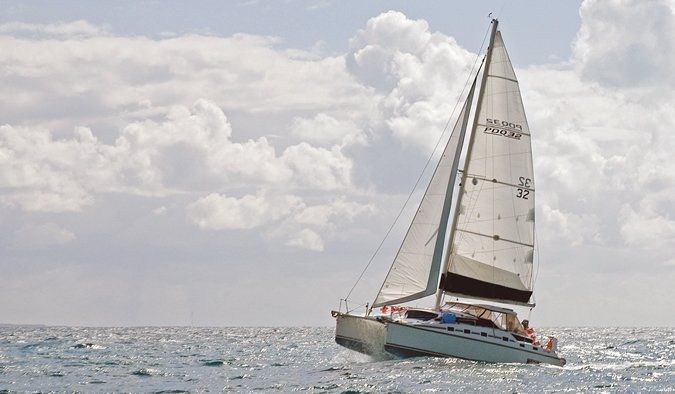
Photo by James Forsyth
The PDQ 32 was kept lightweight- 7,200-pound displacement-through efficient design and the smart use of triaxial cloth, acrylic modified epoxy resin (AME 5000), Klegecell core, and even carbon fiber (in the main beam). As a general rule, fast cats have displacement-to-length (D/L) ratios between 50 and 70, and slow cruisers about 100 to 120. With a D/L ratio of 108, the PDQ 32 could be on the slow side, but the D/L doesn’t tell the entire story.
Its sail area-to-displacement (SA/D) ratio of 19 indicates ample power to drive the hulls; the SA/D increases to 23 with the addition of a genoa. The beam-to-length ratio is 0.52, meaning length overall is nearly twice the beam. While some catamarans, such as the Lagoon 37 (0.60 beam to length ratio) come in much higher, this is a compromise. Ratios greater than 0.5 can lead to bow-burying and increased dockage rates.
Ample bridgedeck clearance and a good ratio of clearance to beam (the wider the boat, the more clearance she will require to avoid slapping) are vital; with 23 inches of minimum clearance over an 8-foot span, the PDQ 32 is nearly immune to bridgedeck slamming, the curse of catamarans that have accepted low clearance in exchange for increased salon headroom and convenience dockside.
Rigs on cruising catamarans usually look rather stubby, and the standard masthead rig on the PDQ 32 is no exception. With an I dimension (the distance along the front of mast from the highest genoa halyard to the main deck) of 40 feet, 10 inches and a sail area of 443 square feet, the PDQ 32 rig is a bit smaller than rigs on monohulls of similar length and has less sail area. For example: The Beneteau First 325 has an I of 41 feet, 7 inches and a 489-square-foot sail area; the Catalina 320 has an I of 43 feet, 7 inches and a 521-square-foot sail area. Also, the Gemini 105M cat carries 515 square feet of sail. However, the PDQ is by far the lightest of these boats, managing to still do well in light air and really scooting when the breeze hits 15 knots.
A tall rig was a PDQ 32 option, most common on the heavier long-range cruising (LRC) version. However, it has not proven to be faster through a range of wind strengths.
The PDQ 32 has a clever, unique cockpit design that allows three levels of seating-all under a hardtop. To help solve the headroom problem in the saloon, the companionway hatch is very wide and slides forward so that just aft of the dinette table, there is full headroom (6 feet, 11 inches) under the hardtop. When the hatch is closed (a rare occasion in most conditions, if you have vinyl windows connecting the hardtop to the deck), most crew must stoop with only 5 feet, 2 inches of headroom. However, when the slider is open, the saloon becomes a delightfully airy place.
Some owners have rigged mosquito netting from the hardtop to the main bulkhead, allowing for great ventilation, even on steamy nights. While the area is not very large, theres plenty of seating, good visibility on the top tier, easy access to the deck, and yet a feeling of protection and shelter.
This setup also means that foul-weather gear is seldom used, as the boat is easily sailed from under the hardtop, and the deck stays dry aft of the beam. In winter, sweaters and windbreakers are the rule in all but sub-freezing weather, since wind is effectively blocked from the helm on most courses.
There is no exterior brightwork-music to a liveaboards ears-and the handrails are stainless steel. The double lifelines, on 24-inch stanchions, have gates at the aft corner and sugar-scoop transoms. Cleats are 10-inch anodized aluminum.
Most of the sail-handling equipment is Harken brand: blocks, cam cleats, and travelers for the self-tending jib, mainsheet, and slider. Primary and secondary winches are located on either side of the cockpit, a mix of two-speed, self-tailing Harken 32s and Lewmar 40s. Rope clutches are Spinlock Easylocks. Some boat owners lead lines back to the cockpit, while others have twin, two-speed winches mounted on the mast.
The PDQ 32s pull-pull steering is by Whitlock. There is also a very workable emergency tiller, and jammed rudders are easily isolated thanks to access through a stern locker. Seacocks are Marelon by Forespar.
Factory ground tackle was most often a 25-pound Delta or Bruce anchor, backed with 50 feet of quarter-inch G4 chain and 150 feet of half-inch, nylon three-strand line led to a windlass and a bow chain locker. Cruising owners have generally upgraded to a 35-pound Rocna or Manson Supreme anchor and 100 feet of quarter-inch G4 chain, again backed with line.
Since these boats typically anchor in shallow water, this allows anchoring on all-chain about 90 percent of the time. A bridle constructed from half-inch line is typically used to secure the anchor rode, as the anchor rollers are mounted on the bows and the crossbeam is not designed for anchoring loads. Windlasses vary, but are most commonly vertical Lewmar Sprints with a combination rope/chain gypsy.
Tankage consists of a 30-gallon aluminum or polyethylene fuel tank aft of the cockpit, a 44-gallon polyethylene water tank under a shelf forward of the dinette, and a 30-gallon fiberglass holding tank that can be emptied offshore by means of a Y-valve and hand pump. The fiberglass holding tanks on our test boat have proven permeation-free after 18 years.
The gasoline tank is located in a sealed, bottom-vented bridgedeck compartment that can serve double-duty as safe storage for portable gas cans and propane cylinders.
The propane system is engineered to current standards, with a forward vented locker sized for two 12-pound tanks. Leak detection in both hulls is tied to a controller and a locker-mounted solenoid valve. Some of these boats have as many as four propane appliances fed from the locker-stove, refrigerator, water heater, space heater-each with a separate propane line.
PDQ thoughtfully located all through-hull fittings and head-related plumbing (except for about 10 inches of waste and intake hose) in a ventilated bulkhead compartment. If the hoses do permeate-as they did on the test boat (see PS April 2012 online)-the odor is isolated from the cabin. However, the holding tank vent is located in an unfortunate position, upwind of salon hatches, but this is easily managed with either proper holding tank treatments or a vent filter (see PS February 2012 and March 2012 online).
The contained through-hulls location proved its worth when the test boat was delivered shortly after its current owner purchased it in 2008. After sea trials, the speed transducer was removed and replaced with a plug; in the process, the O-ring was positioned improperly. Some hours into the two-day trip up the Chesapeake in December (think actual freezing water), the crew noticed a little water dripping past one of the head hoses. Investigation revealed that the forward through-hull compartment had flooded 2 feet deep. The crew pumped it out and realized it was still leaking, but rather than struggle with freezing plumbing in what had become gale conditions, they sailed the boat with the leak for two more days, because the flooding was so well contained. The boat has crash tanks fore and aft (the rudder post is in the latter), a glassed-in holding tank on starboard, and another sealed bulkhead before the cabins begin on each side.
The electrical panel, located in the starboard hull, contains numerous spare breakers; weve not heard of any owner running out. Wiring is well organized and labeled. An inverter with automated transfer switching feeds a 110-volt system sufficient for heating and air-conditioning loads; however, a generator is not standard, so you must be plugged in to shore power or invest in a generator in order to use them.
Batteries include three group 27, deep-cycle wet cells (or an equivalent bank) located in lockers surrounding the cockpit, which makes watering and replacing them easy. Most owners have added solar panels to the hardtop, and some have additional panels above the davits; 170 to 400 watts is typical.

courtesy of Brian Munroe and Lynn Bamberger
The classic PDQ 32 is powered by twin, high-thrust Yamaha 9.9-horsepower outboards mounted in cockpit wells. This central location, 12 feet forward of the transom, places the engines near the boats center of gyration, virtually eliminating cavitation in all conditions and offering the ability to push into 30-knot headwinds.
The LRC version of the 32 has twin, inboard 20-horsepower Yanmar diesels mounted under the aft-cabin bunks. (About 20 percent of PDQ owners opt for the twin diesels.) The diesels offer less noise than outboards and add just a little more speed under power (7.4 knots versus 7.2 knots for the classic), but they reduce speed under sail slightly (about 1 knot), due to increased weight and prop drag. The diesel-LRC version gains a little storage in the cockpit (the outboard wells) but forfeits the cavernous space under the bunks for a net loss in storage.
Whether this storage loss and the weight gain is a fair trade for better propulsion and more reliability depends on whether you sail or motor most of the time, so opinions vary. With twin screws, either version will spin in its own length, and backing into a slip is common practice as boarding the boats is easiest from the stern quarter. However, the twin outboards can be retracted, significantly enhancing performance. Plus, theyre less expensive and can be taken to a shop for service.
Owners of the classic PDQ 32 compensate for lost battery charging power by adding solar panels and a small generator. A rare few add wind generators, but it is pretty common to see a Honda 2000 generator on a PDQ 32. Those who have opted for the new, high-thrust 9.9-horsepower Yamaha outboard conversions can expect a charging capacity of 6 amps at 12 volts each. This, with solar supplementing, is more than sufficient for a cruising couple.
Headroom is 5 feet, 2 inches in the saloon with the slider closed), 7 feet, 2 inches in the amas, and 6 feet, 5 inches in the aft cabins.
In warm weather, the salon bunks become premium, comfortable in dimension and bathed in breeze from well-
positioned fans and overhead hatches. Aft cabins get stuffy owing to their location aft of the cockpit, but hatches provide airflow on even the steamiest night.
While theres a good deal of white fiberglass showing, the overhead liner is vinyl. The cabin sole is teak and holly. Plywood is used for under seats and bunk access boards.
The sleeping cabins are primarily carpeted and have cherry and ash trim. Each has a small hanging locker and several enclosed cabinets for stowage.
There are two private staterooms, complete with six opening ports, numerous cabinets, and cavernous storage areas under the bunk (on the LRC models, this is an easy-to-access engine bay). The mattresses take standard queen bedding. The salon table converts into either a king berth or two twins; there are several versions. We recommend adding quality mattress toppers to the bunks.
With so much interior volume-and no factory air-conditioning (or heat)-good ventilation is a must, and the PDQ does not fall short. Two Bomar hatches above the amas ventilate the forward compartments, and two over the dinette provide salon ventilation; there are four smaller hatches aft, and three in the cockpit. Smaller Bomar side windows line the flanks (13) for a total of 24 opening hatches and ports.
There also are four solar vents in the forward compartments and cabins. Additional light pours in through the smoked acrylic windows surrounding the saloon, providing a rare 270-degree forward panorama, sufficient for watch-keeping during a quick meal.
Galley appliances include a Plastimo propane stovetop, a microwave, and a refrigerator (either a Dometic propane fridge or a top-opening icebox with a cold plate). Because catamarans do not heel much, the propane fridge actually works well, even if its less efficient than an icebox.
While galley counterspace and stowage is limited (there is a large cabinet under the propane fridge, and the bilge in the adjacent cabin is easily accessed), PDQ has worked in a few clever aids such as a pullout spice rack, hinged cutting board, and many shallow cabinets. Its best to keep the gelcoated countertops covered to prevent wear.
Performance
The PDQ 32 is basically a 7- to 10-knot boat. Weve seen 14 knots in non-surfing conditions, using either a spinnaker or genoa, but we don’t recommend it. Although we have long experience with performance cats and know their habits, we only push for short periods and with full attention. We prefer to back off just a little, staying comfortably within the boats performance envelope and enjoying the day.
As a good rule, reefing begins at about 9 knots of boat speed or 20 knots of apparent wind to windward, starting with the main. The LRC model is about a knot slower. Upwind in sustained 15 knots true, expect about 6 to 7 knots with the jib and 8 knots under genoa. Beam reaching in the same winds, weve made 7 to 8 knots and 9 to 10 knots, respectively.
Most PDQ 32 owners buy 90-percent asymmetrical spinnakers for off-the-wind sailing. The tack is controlled with a 2:1 purchase tack line led to each bow cleat, allowing the tack to be moved from side to side to optimize set; it is generally centered through jibes. With a sleeve, setting and dousing the spinnaker is fail-safe, and the sleeve provides sufficient protection while the sail is stored in a bow locker, eliminating the need for a separate sail bag.
It is not hard to see double-digit speeds on the PDQ, but caution is warranted-in a breeze downwind, there is hidden power, and the tack should be kept to windward and the sheet well eased. The spinnaker is best considered a light- to moderate-wind sail, and returned to its bag in favor of the genoa when the true wind is over 15 knots. In a breeze, wing-and-wing dead downwind makes for solid velocity made good and glass-smooth sailing-what cruising in these boats should be about.
In any case, youll pass cruising monohulls up to 45 feet when reaching in a breeze, and pace 40-footers under most conditions. To windward, youll tack through a wider angle, but youll stay with considerably larger boats when the breeze is up. The PDQ 32s PHRF ratings range from 135 to 234, depending on equipment and location.
The PDQ 32 has a deeper draft than its big sister, the PDQ 36-3 feet, 2 inches compared to 2 feet, 10 inches-improving windward performance by a few degrees. Tacking though 100 degrees over ground is possible, if the boat is sailed well and kept moving. The profile view reveals that the keels are unusually far forward; perfect for drying out, but all wrong for tacking.
The keels center of lateral resistance (CLR) is too far forward, relative to the sails center of effort (COE), causing the boat to snap into irons and stay there if given a chance. Back-winding the jib to force the bow through the eye of the wind is a sloppy solution; the boat nearly stops, control is lost, and it may pop back into irons. Backing her to one side, wearing ship, is not reliable either.
The savvy PDQ owner has a different tacking procedure: Accelerate to maximum windward speed by cracking off a few degrees, throw the wheel nearly hard over, release the jib the moment it luffs, and dump the main traveler all the way to leeward when the main breaks (the traveler cleats separately on each tack-pre-set the traveler on the new tack down). Steer well beyond the normal 100-degree tack, placing the true wind on the beam, haul and grind the jib in as soon as it can fill to keep the bow off, and then steer back up to proper course and haul the traveler up as the boat accelerates. The process is simple and quick, once dialed in.
Because the CLR is in front of the COE, keep the traveler a few inches below centerline in lumpy conditions, centered when powered up on flat water. Never place the traveler over center, and always ease the mainsheet enough to preserve twist. Reef the main first; this also helps move the COE forward.
Some owners have added genoas to supplement the stock self-tacking jib. This is a real turbo-charge for the PDQ 32 all around the course, as the keels are large enough to support the additional loading and the genoa brings the COE better in line with the CLR, greatly improving balance.
Because the boat is catamaran rigged (no backstay, shrouds to the extreme beam), the genoa is generally rigged outside the shrouds and sheeted to the extreme beam. The resulting sheeting angle (24 degrees) is too wide for efficient windward work. A successful solution has been to add an inner track and a second set of sheets. The genoa is then sheeted tight against the hardtop, reducing the sheeting angle to 15 degrees and giving a good angle of attack without overpressing the low-aspect keels. The boat can’t point as high as a good monohull, but it can really stomp at 50 degrees true. When reaching, the outer tracks provide beautiful sail shape.
If youre a performance-oriented sailor considering a PDQ 32, look for a boat with a genoa and inside tracks. The difference is real.
Compared to other cats in the same class, the PDQ 32 is as fast in base form, and even faster when tweaked, something the strong but light design seems to encourage. Quality construction has proven to be a boon to owners as well. Sails and moving parts require replacement and upgrade, but the structure and basic systems have been bulletproof.
The center-cockpit setup is different, but testers like the privacy of queen cabins and the expansive forward view, something missing in most cats this size. The salon slider is a unique feature that allows incredible openness in warm weather, requires some stooping in cold weather, and is the cost of high bridgedeck clearance and superior helm visibility. All compromises. Among the few cruising cats of this size, the PDQ 32 offers excellent value.
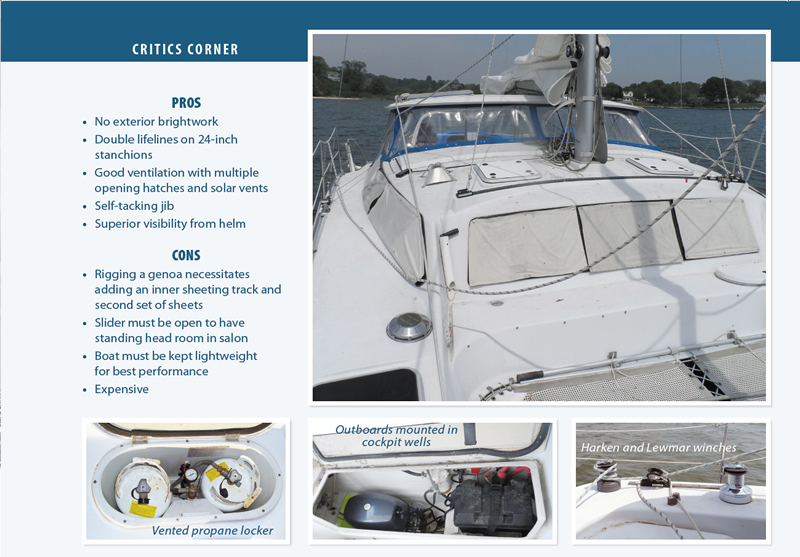
- PDQ: Rugged Quality
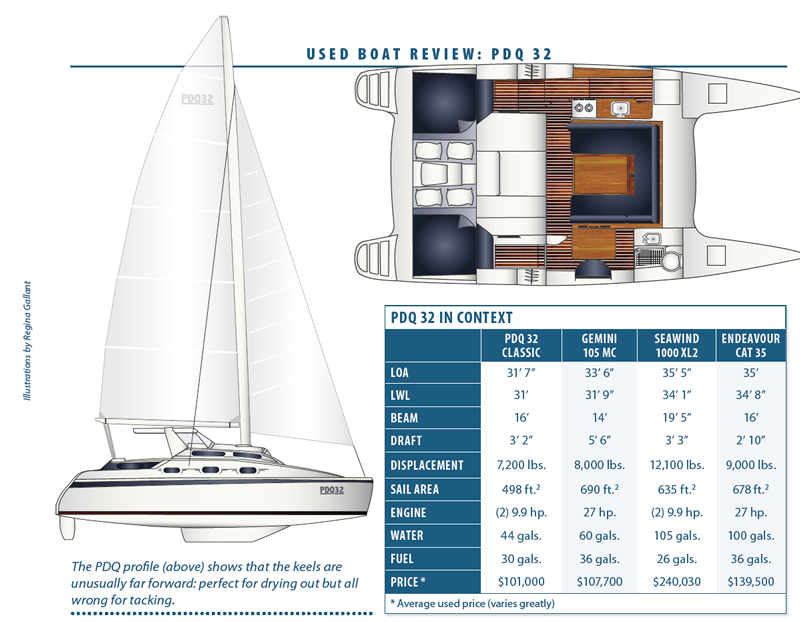
- PDQ Owners Forum
RELATED ARTICLES MORE FROM AUTHOR
Best, detailed, comprehensive review that I can recall reading. Thank you so much!!!
LEAVE A REPLY Cancel reply
Log in to leave a comment
Latest Videos
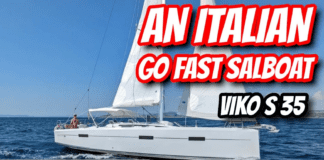
An Italian Go Fast Sailboat – The Viko S 35 |...

What Is The Best Folding Bike For Your Sailboat?

The No Expense Spared Antigua 60 Cruising Sailboat Soolaimon

How To Buy Sails – With Joe Cooper
- Privacy Policy
- Do Not Sell My Personal Information
- Online Account Activation
- Privacy Manager
- Got Questions?
- (978) 549-7912
- [email protected]
Power Catamarans FAQ's
If you are considering a pdq, we anticipate you may have questions. rhumb line has answers having focused solely on the pdq brand, we have seen/experienced/lived it all. below are several questions we tend to be asked. we hope they help guide you in your decision-making process. if there are questions you still have after looking these over, please do not hesitate to reach out to us., what makes power catamarans great for cruising/liveaboard, what makes the pdq unique in its class, what makes the pdq so economical/efficient to operate, what about the construction of a pdq makes it unique in the marketplace, why is the pdq design different than most other power cats that are on the market, is the pdq considered a “blue water” cruiser, when you are cruising, say the bahamas, how long can you stay anchored without the need to visit a marina, is a pdq easy to operate and maneuver, what is the maximum cruising range of the pdq 34 and 41, why did the canadian manufacturer go out of business in 2007, how difficult is it to get parts for all the critical components..engines, generator etc, do the pdq 34 and 41 fit in a regular width slip, why have the pdq 34 and 41 held their value so well over time, how many 34’s and 41’s were built, why is the 34 so popular with “great loopers”, is there adequate outdoor space on a pdq, is cooking on board a pleasurable experience, in case of inclement weather can the pdq be fully operated from inside, is the deck space on a pdq adequate and safe.
- BOAT OF THE YEAR
- Newsletters
- Sailboat Reviews
- Boating Safety
- Sailing Totem
- Charter Resources
- Destinations
- Galley Recipes
- Living Aboard
- Sails and Rigging
- Maintenance

- By Quentin Warren
- Updated: November 2, 2001
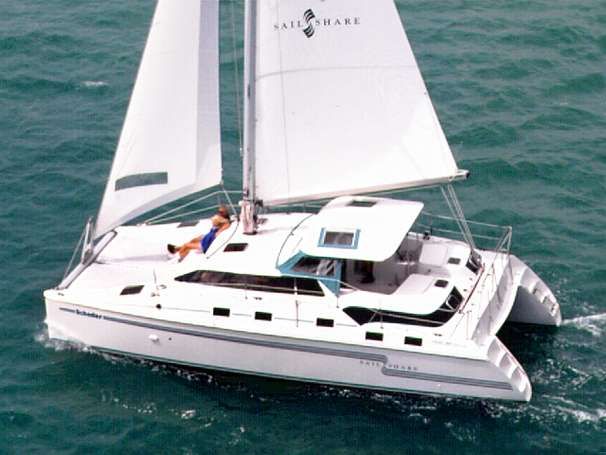
In the world of cruising catamarans, aesthetics take a hit when you cut down on length overall. At issue are a host of conflicting themes — the practical demand for interior volume works against the visual imperative that freeboard be low; the need for bridge deck clearance and standing headroom pushes the cabin profile skyward. What’s graceful, extended and cunning at 45 feet often becomes ungainly in the context of 35.
Which is why Alan Slater’s PDQ 32 is such a remarkable boat. Fully outfitted for long-range cruising, she remains bright, airy and easy to look at. With a nicely proportioned rig and a subtle sloping cabin top, she carries herself like a longer cat and avoids the pitfalls of many of her peers that attempt to consolidate as much mass as possible into a length that won’t accept it. You can cruise or even live aboard this boat quite comfortably, but her scale is such that sail handling and overall maintenance remain uncomplicated.
The deck is safe underfoot with wide gangways, extra-high lifelines, six sets of stainless handholds and the calculated omission of abrupt jogs or steep transitions to throw you off balance. There are deck lockers for anchoring paraphernalia in the bows port and starboard, and a very secure trampoline strung forward of the cabin between the two hulls. Open-air lounging is relegated to this area, also to the cabin top around the mast step and to the stern sections where boarding steps are molded into the transoms.The cockpit is smallish and deep, well protected from the elements by a rigid Bimini. Given its depth it offers a secure haven for kids, and with the main companionway hatch that stretches clear across the cabin shoved forward it becomes a pleasant extension of the saloon. The Bimini is strong enough to stand on when tending the mainsail, and cut-outs allow you to look aloft from the helm under way to check on trim. Care should be taken to avoid bumping one’s head on it when entering or exiting the cockpit area.
Indeed, the Bimini structure and sliding cabin top section constitute a major feature aboard this boat and one that PDQ has sought to refine in more than two years of design trial and error. Early problems with the sliding element involving watertightness and ease of operation have been resolved, as have height and interference problems associated with the Bimini. The result is a unique cockpit space that offers the shade and protection of a pilothouse while retaining an outdoorsy ambience.
PDQ is a good builder with a solid grasp of modern materials. Where exotic components can offer calculable advantages, they are used. Hulls and deck are laid up with knitted triaxial fiberglass fabric in a matrix of AME 5000 (Acrylic Modified Epoxy) resin. Klegecell rigid foam is used for lightness and stiffness in the deck and in the hulls above the waterline; solid glass is spec’d below the waterline. All the coring is vacuum-bagged to optimize the resin ratio and primary bond. A fiberglass beam reinforced with carbon supports the mast step. An aluminum beam is fitted bow-to-bow and rigidified in compression by a pelican striker to accept headstay loads. Structural bulkheads are taped carefully to the hulls with X-weave knitted fabric. There are watertight crash compartments in each hull forward and aft. The rig is set up with diamond stays, and aft-led uppers are secured to stainless steel chain plates bolted into primary reinforcement at the hulls outboard.
The PDQ 32 is available in two basic configurations — the Classic version, offered with two retractable 9.9-horsepower four-stroke Yamaha outboard engines cleverly deployed from pods beneath the cockpit lockers, and the LRC (Long Range Cruiser) version, offered with twin 20-horsepower Yanmar inboard diesel sail drives located in shielded-engine compartments aft. Both give you dual propulsion well separated athwartship for great close-in control. The LRC package offers more power and considerably more alternator charging capability; the Classic package is simpler and lighter.
Both versions are wired for 12-volt and 110-volt circuitry. Freshwater capacity is 90 gallons, pressurized. All plumbing output is above the waterline through the insides of the hulls, and intakes below the waterline are fitted with ball-valve-type seacocks. Wherever possible, fiberglass and PVC pipes are used as fluid conduits in lieu of hose for strength and abrasion resistance.Below, sensitive glasswork combined with just the right amount of cherry trim makes for a delightful interior. The main saloon accommodates up to six people around the dinette and spills congenially into the galley that occupies the port hull forward. Cozy double berths with shelving and locker storage are located in the sterns. The starboard hull amidship includes the nav station with a fold-down chart table and forward of that a one-piece modular head with its own shower.
We went for a pleasant sail aboard the 32 off Newport, Rhode Island, in a steady 15-18 knot sea breeze. The boat relished the moderate conditions and rode smoothly and powerfully through a sizable chop at the mouth of Narragansett Bay. We kept speed in the solid sixes and response at the helm was excellent, even through tacks. There was no apparent slapping on the underside of the bridge deck, and acceleration was quick and positive. In the breezy air we encountered, the behavior of the boat was top-notch.
Suffice it to say, PDQ has brought the 32 along to a commendable level of production and finish. It is definitely an owner-optimized vessel capable of reflecting a host of personal touches, and the company stands behind whatever its clients want their boats to be. Certainly in its size and price range, it is a significant cat.
PDQ 32 Specifications:
LOA: 31′ 7″ (9.63 m.) LWL: 31’0″ (9.45 m.) Beam: 16’0″ (4.9 m.) Draft: 3’2″ (0.96 m.) Disp: Disp: 7,200 lbs. (3,266 kgs.) Sail area: 507 sq.ft. (47.1 sq.m.) Mast above water: 45’0″ (13.7 m.) Length/Beam (hulls): 8:1 Bridge Clear: 40″ (fwd.), 23″ (aft) Cabin headroom: 6’11” (open), 5’4″ (closed) Disp/Length: 108 SA/Disp: 21.8 Fuel tankage: 30 gal. (114 ltr.) Water tankage: 47 gal. (178 ltr.) Auxiliary: 2 x Yanmar 9.9 4-cycle outboard Designer: Alan Slater Base price: $129,500 – $139,500 PDQ Yachts USA 309 Third St. Annapolis, MD 21403 Phone: (410) 268-3700
- More: 2001 - 2010 , 31 - 40 ft , catamaran , Coastal Cruising , multihull , Sailboat Reviews , Sailboats
- More Sailboats
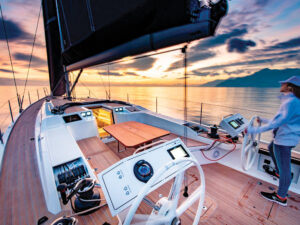
Sailboat Review: Italia Yachts 14.98
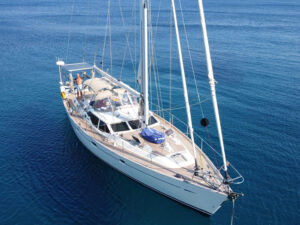
For Sale: 2000 Oyster 53
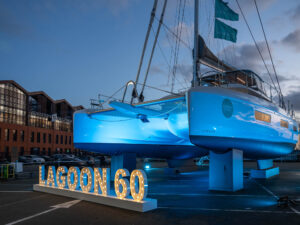
Lagoon 60 Prepares for World Premiere
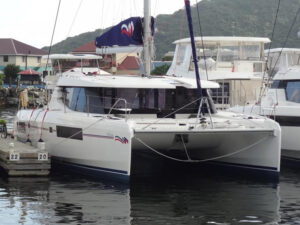
Now For Sale: Leopard 45
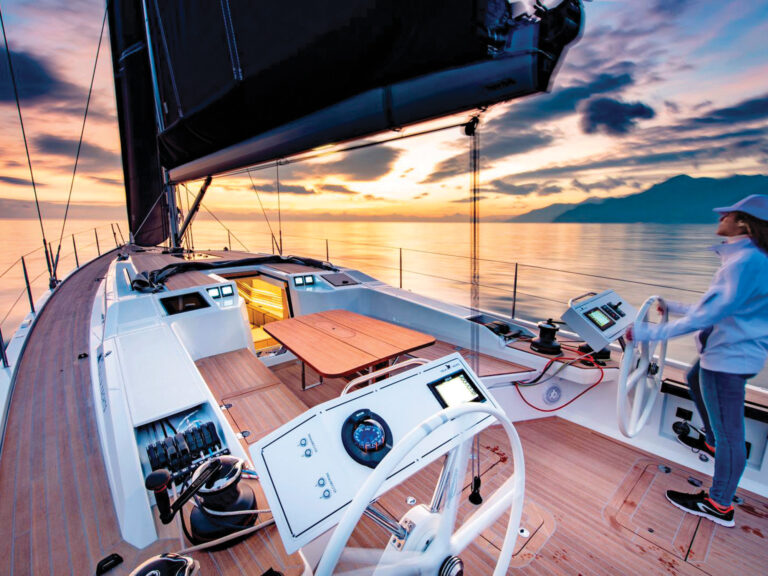
Preparing to Head Out
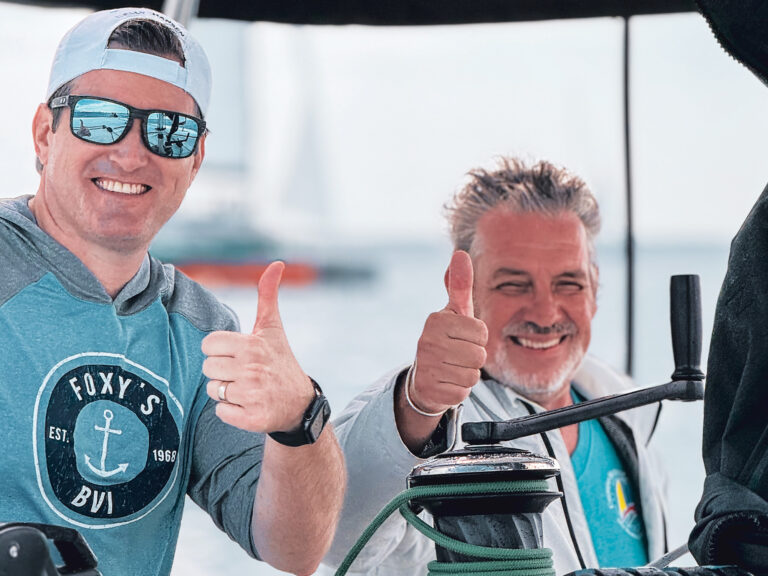
Competitive Cruising: It’s a Rally, Not a Race
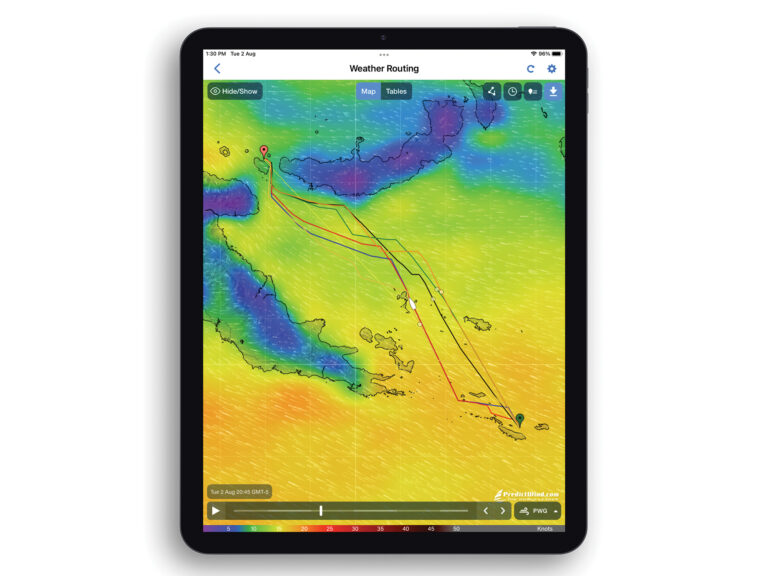
The Data Difference: Advances in Marine Weather Forecasting
- Digital Edition
- Customer Service
- Privacy Policy
- Email Newsletters
- Cruising World
- Sailing World
- Salt Water Sportsman
- Sport Fishing
- Wakeboarding

- Search forums
- Yachting Monthly's Scuttlebutt
Choosing for blue water
- Thread starter geem
- Start date 14 Oct 2018
- 14 Oct 2018
Well-known member
Worth a read http://www.mahina.com/cruise.html . American biased but little to fault in the advice of a very experienced writer. Interesting that his list of boats has Moodys as moderate quality.
SV Kittiwake
Seems strange that he includes the PDQ range of catamarans for offshore cruising, when they're almost universally considered to be generally unsuitable for that.
I will be sure to choose a boat with a bowsprit less than twenty-four feet long.
- 15 Oct 2018
davidjackson said: Early in the article, he writes that an open mind is required when considering a boat for blue water. That would rule-out many contributors on the forum Click to expand...
Motor_Sailor
geem said: Interesting that his list of boats has Moodys as moderate quality. Click to expand...
The only Westerlies in the list are the "26" and "43". Personally I wouldn't choose a centaur as a blue water yacht. YMMV. And they only built 10 Ocean 43s compared with 42 sealords and 112 oceanlords.
- 18 Oct 2018
oldmanofthehills
I also found the Centaur an odd choice unless you are a Mr Roger Taylor who customises and rebuilds everything. As an owner of an LM27 I have been debating seaworthyness for extended passages and viewed this thread seeking tips for smaller cruisers. I certainly didnt expect to see an LM27 listed as suitable. Its rugged enough but it has various flaws that make it vulnerable to flooding in knockdown or wave breaking over cockpit. Lack of bridge deck, stern bulkhead incomplete in not rising to underside of deck, inadequate cockpit drain with only 3 inch of freeboard at drain. Nothing I cant fix given time, and nothing I wont fix or at least improve but still a flaw.
Mmmmmm Anyone who finds that article useful is not ready to go cruising offshore IMHO.
Includes the surprising claim that his HR31 had enough fuel for 300 hrs motoring. Not bad on 16 galls. Methinks one zero too many.
oldmanofthehills said: I also found the Centaur an odd choice unless you are a Mr Roger Taylor who customises and rebuilds everything. As an owner of an LM27 I have been debating seaworthyness for extended passages and viewed this thread seeking tips for smaller cruisers. I certainly didnt expect to see an LM27 listed as suitable. Its rugged enough but it has various flaws that make it vulnerable to flooding in knockdown or wave breaking over cockpit. Lack of bridge deck, stern bulkhead incomplete in not rising to underside of deck, inadequate cockpit drain with only 3 inch of freeboard at drain. Nothing I cant fix given time, and nothing I wont fix or at least improve but still a flaw. Click to expand...
Tranona said: . - even though a large (majority?) growing number of voyagers use boats that are not on this list. Click to expand...
Roberto said: Just check the boats in the Azores marinas, which have probably gone through a couple of transats and possibly some serious weather, I'd say probably 10-20% are of the type described in that site, the majority are production boats, with some relevant percentage of boats (self built, rusted steel, end of life grp, etc etc) which I personnally would not feel comfortable in having a days sail, yet sometimes they come from very, very far away. I think a *lot* more can be gained from preparation of the crew, than by choosing one type of boat than another. Click to expand...
- 19 Oct 2018
I've heard that "Wet Snail" is the best name/adjective.
CAPTAIN FANTASTIC
Tranona said: +1 Also if you go to the Pacific you see a different variety of boats. West coast sailors tend to have an even more nostalgic outlook. When I had some involvement in the marine market there a few years ago the "must have" ocean voyager was the Westsail (or was it Wetsail?) 32. Click to expand...
Active member
>Seems strange that he includes the PDQ range of catamarans for offshore cruising, when they're almost universally considered to be generally unsuitable for that. We saw a number of Prout catamarans in the Caribbean that had crossed the Atlantic.
KellysEye said: >Seems strange that he includes the PDQ range of catamarans for offshore cruising, when they're almost universally considered to be generally unsuitable for that. We saw a number of Prout catamarans in the Caribbean that had crossed the Atlantic. Click to expand...
- Buck Turgidson
Rubbish. Twister not on the list!
capnsensible
RupertW said: Catamarans are fine but have you been on a PDQ catamaran - of course it had aged but even so it was probably the most charming and ramshackle craft I've ever been on. It felt like it would come apart gently leaving everybody floating around in the warm water in a state of bliss. Click to expand...
capnsensible said: They shouldnt use drugs at sea....... Click to expand...
Members online
Share this page.
Did You Know That We Offer Contract to Closing Services? Click Here to Find Out More.
Need Marine Financing? Apply Here With Our Partner, First Approval Source
- Catamaran Interviews
- Catamaran Reviews
- Buying Advice
- Selling Advice
- Woods Design Advice
- Fastcat 445
- Americat 3014
- Aventura 37
- Balance 526
- Bali 40 Catspace
- Bali Catsmart
- Beneteau Blue II
- Broadblue 346
- Broadblue 38 Prestige
- Broadblue 385
- Broadblue 435
- Broadblue 46
- Catalac 10M
- Catalac 11M
- Catalac 12M
- Catalac 900
- Catana 42 S
- Chris White 48 Voyager
- Chris White 55
- Corsair F28 R
- De Villiers
- Dolphin 460
- Endeavour 30
- Endeavour 35 Victory
- Endeavour 36
- Endeavour 44
- Endeavour 44 TrawlerCat
- Endeavour 50 Pilothouse Trawler
- Fortuna 36 Island Spirit
- Fortuna 401 Island Spirit
- FP 32 Maldives
- FP 35 Tobago
- FP 37 Antigua
- FP 38 Athena
- FP 39 Fidji
- FP 40 Lavezzi
- FP 40 Lucia
- FP 40 Summerland MY
- FP 41 Lipari
- FP 42 Astrea
- FP 42 Venezia
- FP 43 Belize
- FP 44 Helia
- FP 44 Orana
- FP 46 Bahia
- FP 46 Casamance
- FP 48 Salina
- FP 56 Marquises
- FP 57 Sanya
- FP 58 Ipanema
- FP 60 Eleuthera
- FP Saona 47
- Gemini 3000
- Gemini 3200
- Gemini 3400
- Gemini Freestyle 37
- Gemini Freestyle 399 Power
- Gemini Legacy 35
- Grainger 420 Mystery Cove
- Hirondelle 7M
- Lagoon 37 TPI
- Lagoon 42 TPI
- Lagoon 43 PC
- Lagoon Seventy 8
- Leopard 39 PowerCat
- Leopard 45 Classic
- Leopard 47 PowerCat
- Leopard 51 PowerCat
- Leopard 53 PowerCat
- Lidgard 73 Executive
- Maine Cat 30
- Maine Cat 41
- Matrix 450 Vision
- Matrix 760 Silhouette
- Maverick 400
- Maverick 420
- Maverick 440
- Nautitech 40
- Nautitech 442
- Nautitech 46 Open
- Nautitech 47
- Outremer 40
- Outremer 45
- Outremer 50 Standard
- Outremer 55
- Outremer 5X
- Privilege 37
- Privilege 39
- Privilege 42
- Privilege 43
- Privilege 435
- Privilege 45
- Privilege 465
- Privilege 48 Transcat
- Privilege 482
- Privilege 495
- Privilege 510
- Privilege Serie 5
- Prout 31 Quest
- Prout 33 Quest
- Prout 34 Event
- Prout 35 Snowgoose
- Prout 37 Snowgoose
- Prout 37 Snowgoose Elite
- Prout 38 Manta
- Prout 39 Escale
- Royal Cape 45
- Royal Cape 530 Majestic
- Royal Cape Majestic 500
- Sailcraft 30 Iroquois
- Sailcraft 32 Comanche
- Sailcraft 35 Cherokee
- Sailcraft 41 Apache
- Sailcraft 44 Apache
- Wildcat 350
- Seawind 1000
- Seawind 1160
- Seawind 1200
- Seawind 1260
- Seawind 1600
- Solaris 36 Sunrise
- Solaris 36 Sunstar
- St Francis 44
- St Francis 48
- St Francis 50
- Stealth 11.8
- Sunreef 74C
- Sunreef 82 DD
- Sunreef 88 DD
- Heavenly Twins 26
- Ocean Twins 38
- Voyage 380 Maxim
- Voyage 400 Norseman
- Voyage 430 Norseman
- Voyage 450 Cabriolet
- Voyage 47 Mayotte
- Wharram 38 Tiki
- AMI 320 Renaissance
- Woods 22 Wizard
- Woods 35 Banshee
- Woods 35 Flica
- Woods 36 Scylla
- Woods 36 Vardo
- Woods 38 Transit
- Woods 40 Meander
- Xquisite X5
- Xquisite X5+

PDQ is a Canadian manufacturer and stands for Performance, Dependability and Quality founded in 1987 in Whitby, Ontario. PDQ’s are known for their construction quality, with solid fiberglass below the waterline, and above the waterline and all decks fiberglass cored with Klegacell or Corecell foam. All fiberglass is the finest quality tri-axial knitted fabric and vinylester resin that is vacuum bagged with vacuum assisted injection, reinforced in high stressed areas. PDQs match up or beat any catamarans constructed today!

There are no catamarans currently for sale of this brand.
Please see our catamarans for sale page for a full listing of other currently available models.
Educational Articles
Pdq 36 review with “s/v desert star”.

This is another episode of our reviews of common cruising catamarans. We spoke with Eric and Bonnie who own a PDQ 36. They contacted us because they enjoyed our PDQ 32 interview with Aurora and Dennis and agreed to tell us about their boat, Desert Star.
Very thankful for their interest in our project and to all of you watching our videos and reading these transcripts. We welcome those who own catamarans and want to see them reviewed to please contact us to setup a Zoom call at your convenience.
Eric, do you want to start off by telling us a little bit about your background and who you are and how you came to choose a PDQ36?
- Tags Catamaran Interviews , Catamaran Reviews

- DESCRIPTION
PDQ Capella 36
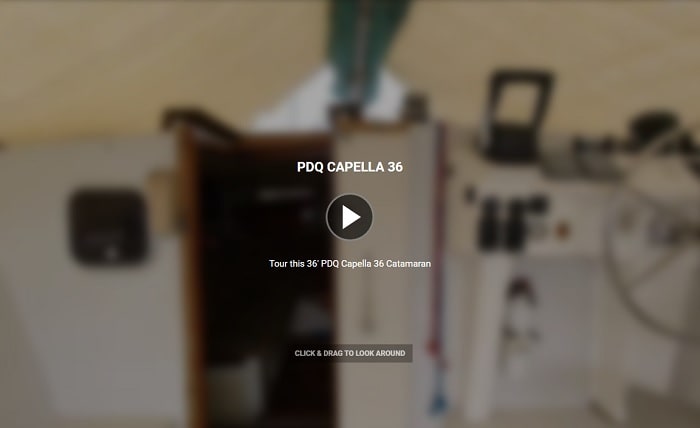
Designed by Alan Slater, the PDQ 36 Capella is a well-built, nimble-sailing, cruising cat designed for families and not for charter companies. Safe, stable, and dependable, she’s the ideal size for single-handing, perfect for family cruising or couples on a holiday.
She is an affordable, safe and proven performance cruising catamaran. Her 2’10” draft is ideal for tucking into protected anchorages while her 18′ beam with comfortable bridge deck add amazing comfort and stability.
Owner is very motivated to sell so don’t miss out on this opportunity and come check her out!
This vessel is located in beautiful San Carlos, Sonora, Mexico, a short 250 mile drive on a safe 4-lane highway from Nogales, Az. San Carlos is a known boating destination/community, featuring breathtaking scenery, quiet anchorages nearby, great fishing, diving, two marinas, 3 haul out facilities and much more.
- length: 36 ft. (10.97 m.)
- price: US$ 75,000
- builder: PDQ
- draft: 2.83 ft. (0.86 m.)
- max speed: 7 kn
- beam: 18 ft. (5.49 m.)
- cruising speed: 5 kn
- built: 1989
- Fiberglass hull
Speed & Distance
Accommodations.
Port and st’bd hulls have large state rooms with queen size beds and more than ample drawers and hanging lockers. Full galley located in the port hull with heaps of room and storage. Aft of the galley is a single berth converted to a “garage” which contains tools, tons of spares, paints and the water maker. Aft of the st’bd stateroom is a Large chart table with a folding seat. Across from that are enclosed shelves to carry weeks of provisions and various gear. Aft of the chart area is the head with a shower, etc.
- REFRIGERATION: Adler/barbour
- FREEZER: Same
- WATER SYSTEM: Pressurized fresh
- STOVE: 3-burner
- COOKING FUEL: Propane
- SINK: Double stainless steel
- OTHER: Mood lighting
Navigation and electronics
- SSB TUNER: Icom
- PACTOR: Yes
- VHF: Icom with remote cockpit microphone
- VHF #2: Hand held
- GPS: In chart plotter
- GPS #2: Germane portable
- RUDDER ANGLE: Yes
- AIS RECEIVER: Yes
- AIS TRANSPONDER: Yes
- STEREO: Kenwood
- DEPTH SOUNDER: Raymarine
- WIND SPEED / DIRECTION: Raymarine
- AUTOPILOT: Raymarine
- PLOTTER: Raymarine
- COMPASS: Yes
- RADAR DETECTOR: On the VHF
- HOUSE BANK 1: 4 new sealed house batteries with 105 x 4 amp-hours
- BATTERY MONITOR: Yes
- BATTERY SWITCH: Yes
- INVERTOR: Yes
- ALTERNATOR: In outboards
- AC VOLTAGES: Yes at 60 HZ Hertz
- DC VOLTAGES: Yes
- SOLAR PANELS: 350 watts
- SMART REG: Yes
- BILGE PUMP: 4 electric, 1 manual
- RAW WATER SEA STRAINER: Yes
- FIRE EXTINGUISHING: 3
- FUEL FILTERS: 2 racor
- FUEL SHUT OFF: Yes
- HEAD TYPE: Jabsco manual
- HOLDING TANK: 30 gal
- WATERMAKER: Spectra, 8 gals/hr
- PROPELLER: Outboards
Deck and hull
- ANCHOR: Rocna 33 lbs with 80 ft feet chain and 220 ft feet rope
- ANCHOR 2: Fortress- new with 40 ft feet chain and 200 ft
- WINDLASS: Lofrans elecric/manual
- DINGHY: Achilles w/Nissan 8 HP outboard
- BOW ROLLERS: 2
- NAV LIGHTS: Yes
- SPREADER LIGHTS: Yes
- DECK LIGHTS: Yes
- LIFELINES: Yes
- RAILS: Full felines
- DINGHY DAVITS: Yes
- DECK MATERIAL : Fiberglass
- SWIM STEP: Yes
- BOW PULPIT: Both sides
- OTHER : Bimini top and dodger
- This cat is fast, fun and will keep sailing in very light winds, with the screecher, while others are motoring. The rig is extra tall for extra sail area.
- MAIN: Full batten, approx. 8 years, good condition
- JIB: 120% roller furling, 5 years, excellent
- SPINNAKER: Screecher, 4 years, excellent
- #1 GENOA: 120% roller furling, 5 years, excellent
- TYPES OF SAILS: Main, Genoa and screecher
- TRAVELER: Yes
- ROLLER FURL: Yes
- BOOM VANG: Yes
- MAST: Aluminum
- STANDING RIGGGING: Stainess steel
- LINES LED AFT: Reefing and halyards
- OTHER: Bowsprit for screecher
- Large cockpit with spray dodger and full bimini cover with zip on rear and side covers.
- DODGER: Yes
- WHEEL/TILLER COVER: Yes
- COCKPIT: Yes
- BIMINI: Yes
- HATCHES: Yes
- COCKPIT CUSHIONS: Yes
- BUG SCREENS: On hatches
- OUTBOARD COVER: Yes
- LIFEJACKETS: 6
- LIFE RINGS: 1
- USCG SAFETY PACKAGE: Yes
- STROBE: Yes
- MOB POLE: Yes
- HARNESSES: 2
- FLOAT RING: Yes
- FLARES: Yes
360 Virtual Tour
Make an inquiry, contact the broker.
+1 888-391-7550 (from US/CAN only) +52 646-341-2609 (Mexico) [email protected]
From our gallery
The Company offers the details of this vessel in good faith but cannot guarantee or warrant the accuracy of this information nor warrant the condition of the vessel. A buyer should instruct his agents, or his surveyors, to investigate such details as the buyer desires validated. This vessel is offered subject to prior sale, price change, or withdrawal without notice.
Financial and titling transactions are conducted in the US or Canada by licensed agents. An offshore purchase means great savings and the process is more hassle-free than you may think! Call for details.
Interested in this yacht?
+52 646 341 2609 (MX)
+1 888 391 7550 (USA/CAN)
Mon - Sat, 9.00am until 6.30pm MST
San Carlos, Sonora, Mexico

COMMENTS
PDQ 41 Power Catamaran. Blue Water Cruiser. cruising at speeds of 17-18 knots. The PDQ 41 design is based on all the learning experiences of the PDQ 34 coupled with extensive computer aided design and testing efforts. The PDQ 41 is the most fuel efficient boat of this class ever built and yet her performance will knock your socks off.
PDQ 41 Power Catamaran. Blue Water Cruiser cruising at speeds of 17-18 knots. The PDQ 41 is the most fuel efficient boat of this class ever built and yet her performance will knock your socks off! At speeds of 8-9 knots, the PDQ 41 burns 2.5gph and 15 knots, 8gph. The walk-around bed on the PDQ 41 is surrounded by full-size windows and is ...
I have my eye on a PDQ 36 catamaran, but am wondering about its suitability for long blue water passage-making. While most of my sailing would be coastal, I would like to sail one across the Pacific to Australia and possibly even circumnavigate. My research suggests the PDQ 36 is a good quality, fast cat offering decent live-aboard space for two people at a reasonable price point.
Price: $545,000 USD. Link here for full listing on our Yacht World page. Tour of BLUE, a 2006 PDQ Antares Catamaran for Sale. Watch on. Walk through the 2006 PDQ Antares 44i s/v Blue that's currently for sale. From new sails and electronics, to a complete mechanical overhaul and brand new Yanmar diesel engines, s/v Blue is equipped for ocean ...
Designed to determine if a boat has blue water capability. The CSF compares beam with displacement since excess beam contributes to capsize and heavy displacement reduces capsize vulnerability. The boat is better suited for ocean passages (vs coastal cruising) if the result of the calculation is 2.0 or less. The lower the better.
Re: Small/Affordable Bluewater Capable Cats? There are a number of Heavenly Twins 26ft centre cockpits circumnavigating. You can consider any of the Prouts, the PDQ is excellent, then there are the older Fountain Pajots (35/37) as well as the TP lagoons (37ft). There are a small number of South African Island Spirit 35/37's also knocking around.
2003 PDQ 34 Power Catamaran. US$199,000. ↓ Price Drop. United Yacht Sales | Merritt Island, Florida. Request Info; 2006 PDQ 34 Power Catamaran. US$325,000. ... a variety of hull types: catamaran. These hull variations are commonly employed for cherished and time-honored on-the-water activities like overnight cruising, day cruising and sailing ...
The PDQ 34 is a cleverly designed, manageable, power catamaran, ideal for a cruising couple with occasional guests. ... From the water, access the aft deck via 4 steps, port and starboard hull. S/S handholds; ... 2006 PDQ 34 Power Catamaran | 34ft. Annapolis, Maryland. US$325,000 . 3317 hours. Own this boat for $2,567/month. Customize.
1998 PDQ 36 Capella. US$139,500. American Yachts | Gulfport, Florida. Request Info. <. 1. >. * Price displayed is based on today's currency conversion rate of the listed sales price. Boats Group does not guarantee the accuracy of conversion rates and rates may differ than those provided by financial institutions at the time of transaction.
Brand: PDQ 36. Brand: PDQ 36. Designed by Alan Slater, the PDQ 36 Capella is a well-built nimble-sailing cruising cat designed for families and not for charter companies. Overall, 100 PDQ were built , making it one of the most successful cruising catamarans manufactured in North America. The PDQ 36 Capella is handsome in profile, partially due ...
1990 PDQ 36 Performance, Durability, Quality, describes the PDQ 36' catamaran. Constructed for durability and safe passages as a capable blue water cruiser. This is a fast nimble sailing cat with all lines run aft. Easily single handed. Even the reef lines are run aft with a jiffy reefing system.
The PDQ 32 was kept lightweight- 7,200-pound displacement-through efficient design and the smart use of triaxial cloth, acrylic modified epoxy resin (AME 5000), Klegecell core, and even carbon fiber (in the main beam). As a general rule, fast cats have displacement-to-length (D/L) ratios between 50 and 70, and slow cruisers about 100 to 120.
The PDQ catamarans were specifically designed for the cruising couple (with occasional guests) who want to explore the Americas coast and offshore islands. This design criterion focused on features that are critical to the long term cruiser, not the week-long charterer. ... Based on that definition the PDQ 34 or 41 are definitely not blue water ...
This is another episode of our reviews of common cruising catamarans. We spoke with Eric and Bonnie who own a PDQ 36. They contacted us because they enjoyed our PDQ 32 interview with Aurora and Dennis and agreed to tell us about their boat, Desert Star. Very thankful for their interest in our project and to all of you watching our videos and ...
Gross Weight: --. Fuel Capacity: 184 gals. Model Years: 2000—2007. Draft: 2'4". Beam: 16'10". Water Capacity: 80 gals. Waste Capacity: 38 gals. Length w/ Pulpit: --. The PDQ 34 (called the PDQ 32 until the hulls were lengthened in 2003) is a distinctive catamaran trawler whose stable ride and exceptional fuel economy made her a popular boat ...
PDQ Power catamaran boats are typically used for overnight-cruising. These boats were built with a fiberglass catamaran; usually with an inboard and available in Diesel. Got a specific PDQ Power catamaran in mind? There are currently 28 listings available on Boat Trader by both private sellers and professional boat dealers. ...
2004 PDQ 34 Power Catamaran. US$259,000. US $2,046/mo. Rhumb Line Yacht Sales | Palm City, Florida. Request Info. <. 1. >. * Price displayed is based on today's currency conversion rate of the listed sales price.
Water tankage: 47 gal. (178 ltr.) Auxiliary: 2 x Yanmar 9.9 4-cycle outboard Designer: Alan Slater Base price: $129,500 - $139,500 PDQ Yachts USA 309 Third St. Annapolis, MD 21403 Phone: (410) 268-3700
Seems strange that he includes the PDQ range of catamarans for offshore cruising, when they're almost universally considered to be generally unsuitable for that. 14 Oct 2018 ... Personally I wouldn't choose a centaur as a blue water yacht. YMMV. And they only built 10 Ocean 43s compared with 42 sealords and 112 oceanlords. 18 Oct 2018 #8 O.
PDQ is a Canadian manufacturer and stands for Performance, Dependability and Quality founded in 1987 in Whitby, Ontario. PDQ's are known for their construction quality, with solid fiberglass below the waterline, and above the waterline and all decks fiberglass cored with Klegacell or Corecell foam. All fiberglass is the finest quality tri ...
Designed by Alan Slater, the PDQ 36 Capella is a well-built, nimble-sailing, cruising cat designed for families and not for charter companies. ... She is an affordable, safe and proven performance cruising catamaran. Her 2'10" draft is ideal for tucking into protected anchorages while her 18′ beam with comfortable bridge deck add amazing ...
It's very rare to find any catamaran with a 3-4' bridgedeck clearance, let alone a 30-32' catamaran. We have almost 3' on our TRT and bridgedeck slap is very rare. We had about 1' on our Gemini and it slammed in almost any condition, sailing or at anchor. So much more to slamming than just BD clearance.